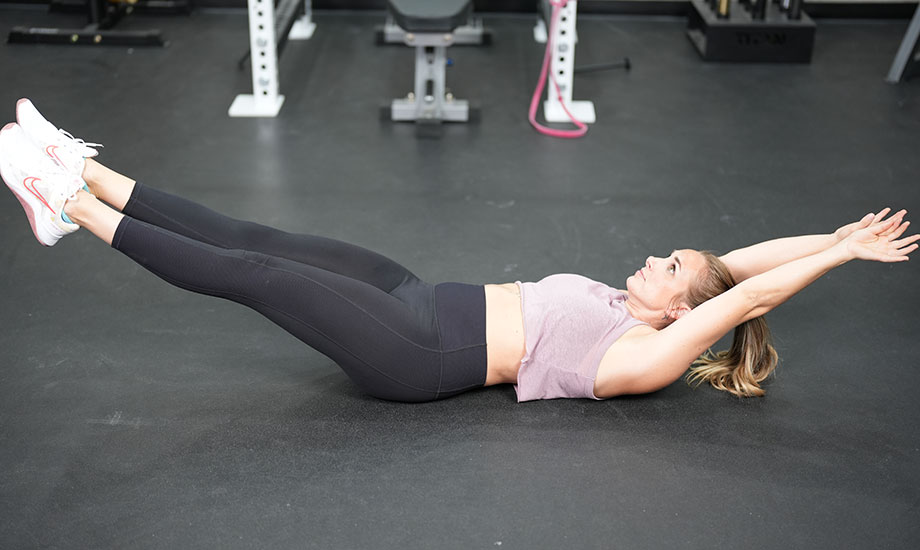We test and review fitness products based on an independent, multi-point methodology. If you use our links to purchase something, we may earn a commission. Read our disclosures.
Many great ab exercises train the core, midsection, or whatever buzzword you use. Many core exercises you see on social media look cool, but whether they’re effective is up for debate? You know what’s effective and doesn’t necessarily look cool? The hollow rock exercise. The hollow rock is a progression of the hollow hold workout, where you get into the hollow position and rock back and forth.
At first glance, it doesn’t seem like the hollow rock is that difficult, but just wait until you try it. Your abs will be wondering what the heck is going on. To ensure you do this exercise properly and know its benefits, we’ll do a mini deep dive on everything hollow rock for your six-pack ambitions.
RELATED: Functional Core Exercises
This ab exercise will rock your world.
How to Do the Hollow Rock Exercise
- Set yourself up in the hollow hold position by lying face up on the floor, raising your arms and legs four to six inches, and pressing your lower back into the ground. You should feel a heavy muscle contraction in your core, and your shoulder blades should be off the ground.
- Gently rock forward and then back without your hands or feet touching the ground.
- Perform either for repetitions or time and then lower your limbs and repeat.
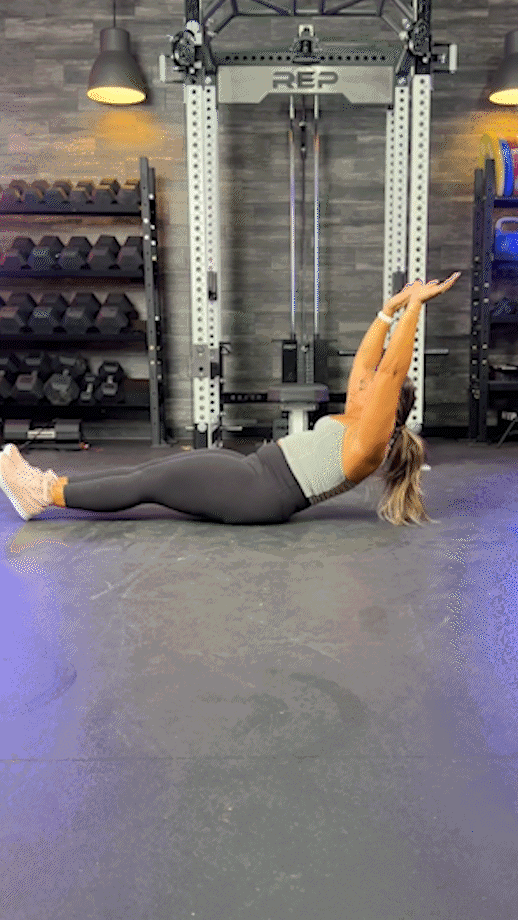
Trainer Tips for Form
The hollow rock is simple to execute and perform, but the devil is in the details. Use these Certified personal trainer tips from yours truly for proper form.
Press Your Lower Back Into the Ground
You’ll need a rock-solid hollow hold starting position before you can do the hollow rock. Because for both exercises, the lower back is the only point of contact on the ground. The lower back must be neutral and pressed into the ground for the hollow rock to work. Tucking your chin to your chest is an excellent cue to reinforce a neutral spine.
RELATED: Lower Back Exercises
Be Aware of Your Hands and Feet
When it comes to how far your hands and feet are off the ground, more is not better because you’ll lose some tension on the core and make the exercise easier. Four to six inches off the ground is the ideal height for the hollow hold and rock to work its magic.
Start Slow
For the hollow hold to be effective, gently rock forward and back, avoiding the use of excessive momentum. If you’d like to progress the hollow rock, don’t add speed but more range of motion on the rock forward.
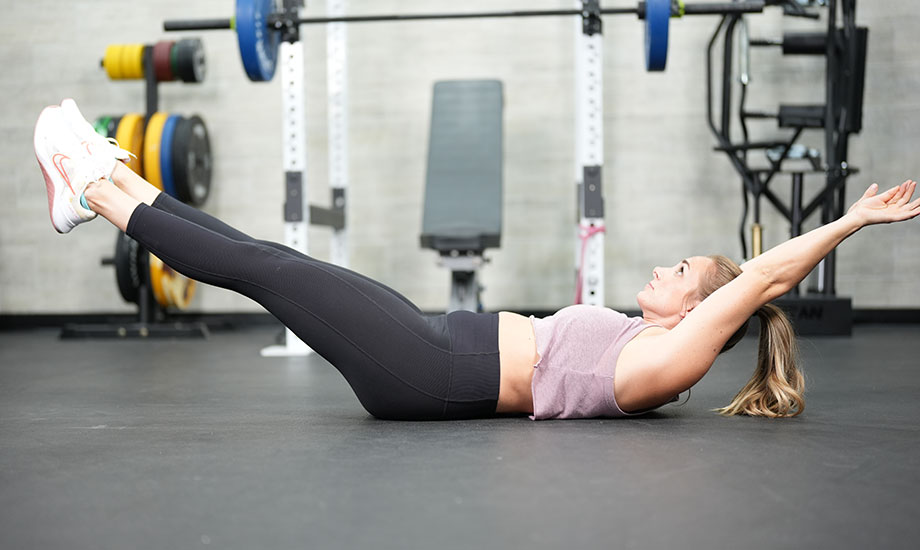
Common Hollow Rock Exercise Mistakes
There isn’t much that can go wrong with performing the hollow rock exercise because it’s not a complicated compound exercise like a barbell squat or deadlift. That said, there are a few things you’ll need to keep your eyes on to crush this exercise and your abs.
Excessive Arch in Your Lower Back
It seems almost counterintuitive to round your lower back because, with many exercises, you are told to keep it neutral or arched. But with the hollow rock and hold, you’ll need to slightly round your spine to keep your lower back on the ground. If you have trouble with excessive lower back arch during the hollow rock, ensure you set up correctly, tuck your chin in, and try not to raise your legs and arms too high.
RELATED: Hyperextension Exercise
Too Much Momentum
Granted, you’ll want momentum to get this exercise rocking, but don’t go wild with the rocking back and forth. Not controlling the speed means you lose tension in your abs, and you may bump your head on the ground. Neither is recommended. Start with a small rocking range of motion before expanding it when you feel more confident and stronger.
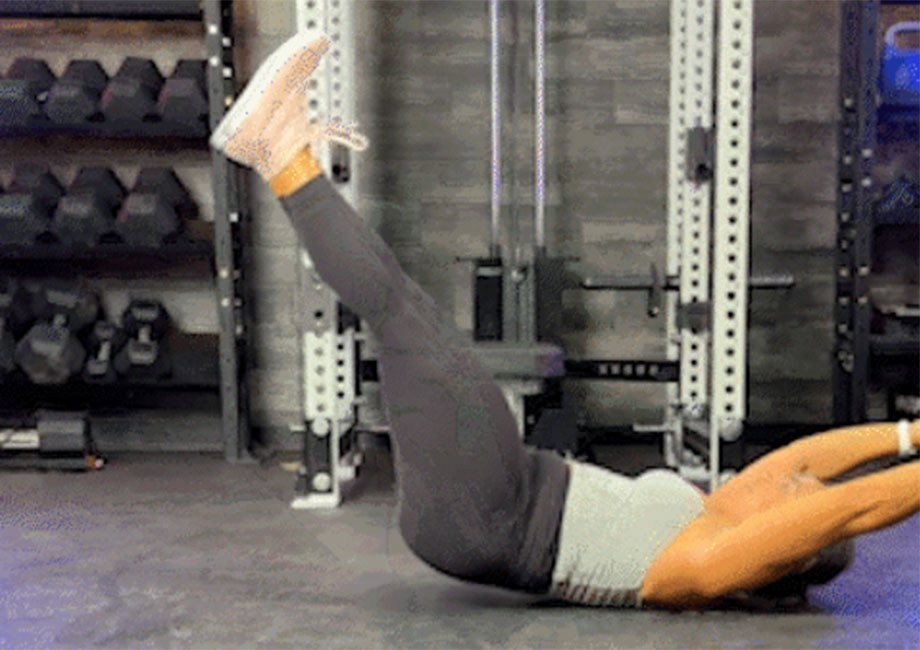
Touching the Ground
Your hands, feet, or head should never come into contact with the ground. This usually means you have lost control of the rocking back and forth. Instead, stay in a range of motion (ROM) you can control, and if you start to lose control, stop, reset, and continue.
Hollow Rock Benefits
Besides improving your core strength and endurance, the hollow rock benefits help you with other complex exercises that require core strength.
Improved Core Control
Think of the hollow rock as a moving plank face up. The movement forces you to keep a neutral spine as your core muscles struggle to stabilize your spine and prevent rotation. Strengthening a neutral spine and being aware of it keeps you honest with performing weighted exercises like squats, deadlifts, and overhead presses. A stronger core is also needed for better technique and power transfer from your lower to upper body.
RELATED: Plank Exercises
Improved Form with Other Complex Exercises
The hollow rock challenges your core strength, endurance, and ability to stay balanced and stable. The challenge of the hollow rock positively affects exercises such as pull-ups, handstand push-ups, gymnastics moves, and dips because you’re building functional core strength.
RELATED: Balance Exercises
Hollow Rock Exercise Variations
As great as the hollow rock is, not everyone can do it, so the regression of the hollow hold comes into play. Plus, when you’re ready for a challenge, we have one below.
One-Leg Hollow Body Rock
Why do it: The one-leg hollow body rock is a progression from the hollow rock as it adds an offset to make your core workout harder to stay stable.
How to do it:
- Assume the hollow hold position and tuck your right knee toward your chest.
- Gently rock back and forth, avoiding rotating to one side.
- Stop, reset, tuck your left knee toward your chest, and continue.
- Do even reps on both sides.
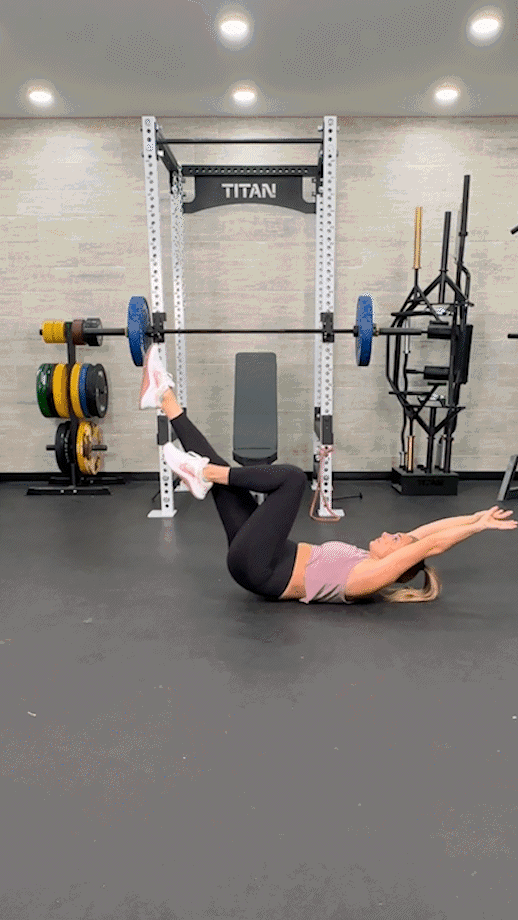
Hollow Body Hold
Why do it: If you find it challenging to perform the hollow rock, doing the hollow hold will still build oodles of core strength without the motion.
How to do it:
- Lie on your back with your feet together. Toes pointed forward and raise your arms overhead.
- Raise both your feet and arms four to six inches off the floor.
- Hold this position for the desired time and then lower your limbs.
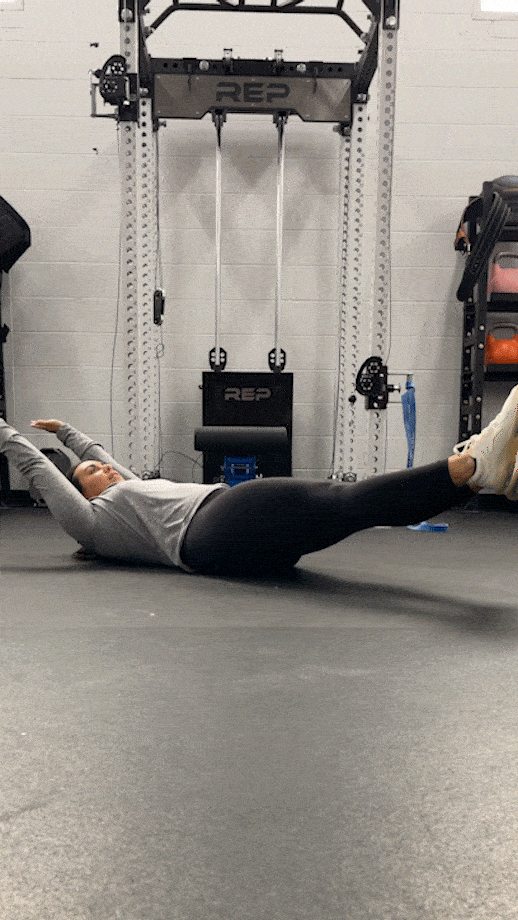
Hollow Rock Exercise: Final Thoughts
The hollow rock exercise may not be considered the most exciting ab exercise to add to your weekly core workout, but it has many benefits that make it worthy of your training time. It’s relatively simple to do and can help improve your core control and form on your more complicated compound exercises. So, why not give it a try? Rock on.
Hollow Rock Exercise: FAQs
What is the hollow rock exercise good for?
The hollow rock is excellent for building rock-solid core strength and is highly transferable to other exercises requiring a neutral spine. These exercises include chin-ups and pull-ups, deadlifts, squats, and overhead press variations.
What muscles does the hollow rock work?
When you perform the hollow rock exercise, you will find this out the difficult way, but the abdominal muscle groups it strengthens are the transverse and rectus abdominis, obliques, hip flexors, and quads.
RELATED: Best Ab Exercises
Are hollow holds harder than planks?
With most plank variations, you have two, three, or four points of contact on the ground. The hollow hold has one point of contact, and the flexed abs with the arms and legs acting as resistance definitely make the hollow hold harder than most basic front and side plank variations. Beginners might be better off starting with the front plank before moving on to the hollow hold.
RELATED: 10-Minute Ab Workout
Further reading

A registered dietitian runs down the best protein powders for seniors to make sure their golden years are…well, golden. Read more

Wondering which Life Fitness functional trainer is best for you? We take a look at the top two models from this commercial brand. Read more

Want to know what the best NordicTrack ellipticals are? We break down what you need to know about each machine from the cardio giant. Read more

For our expert guide to hanging leg raises we asked a certified trainer for the benefits, best alternatives, do’s, and don’ts of this dynamic core exercise. Read more

